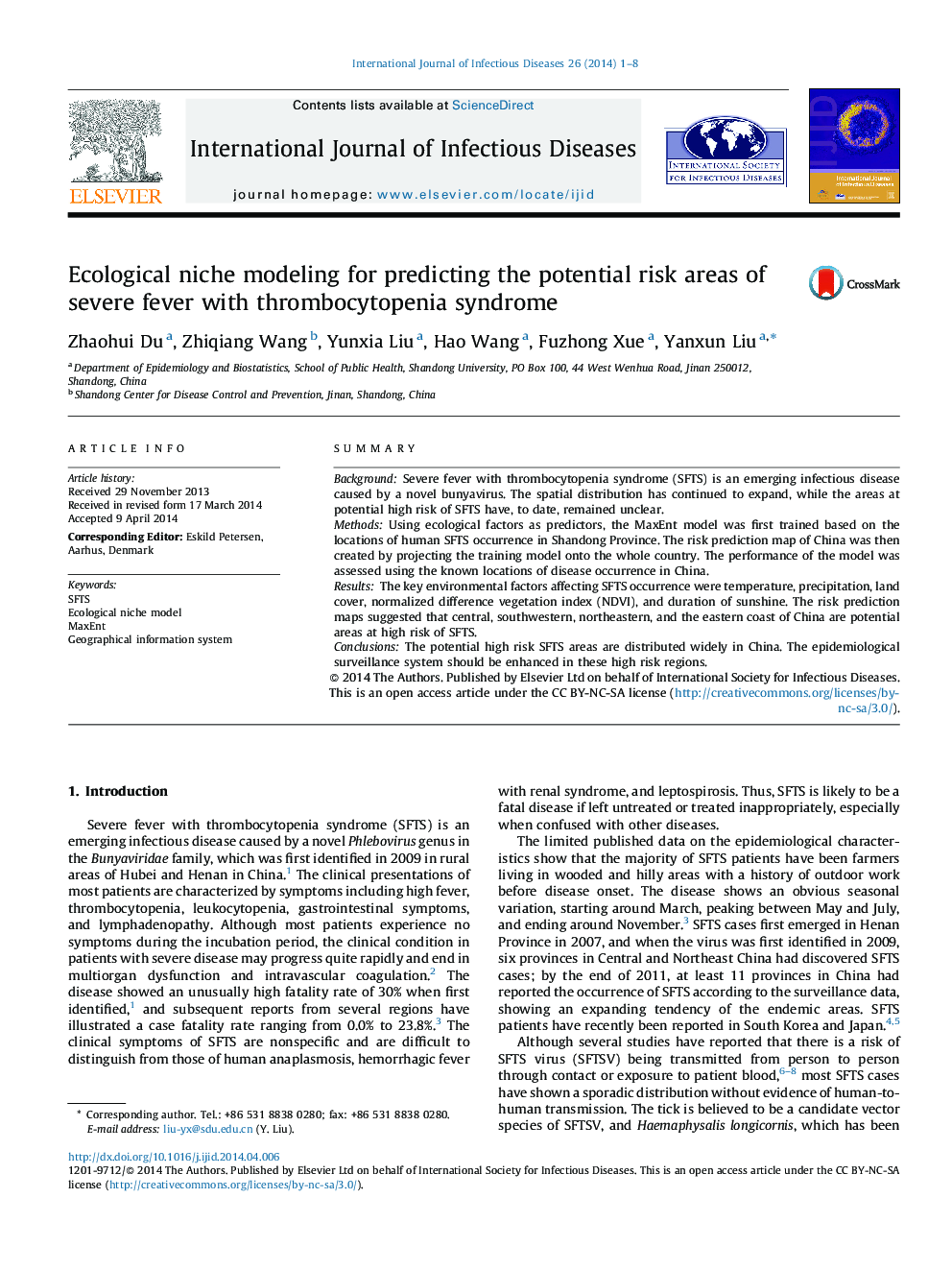| کد مقاله | کد نشریه | سال انتشار | مقاله انگلیسی | نسخه تمام متن |
|---|---|---|---|---|
| 3362489 | 1592069 | 2014 | 8 صفحه PDF | دانلود رایگان |
SummaryBackgroundSevere fever with thrombocytopenia syndrome (SFTS) is an emerging infectious disease caused by a novel bunyavirus. The spatial distribution has continued to expand, while the areas at potential high risk of SFTS have, to date, remained unclear.MethodsUsing ecological factors as predictors, the MaxEnt model was first trained based on the locations of human SFTS occurrence in Shandong Province. The risk prediction map of China was then created by projecting the training model onto the whole country. The performance of the model was assessed using the known locations of disease occurrence in China.ResultsThe key environmental factors affecting SFTS occurrence were temperature, precipitation, land cover, normalized difference vegetation index (NDVI), and duration of sunshine. The risk prediction maps suggested that central, southwestern, northeastern, and the eastern coast of China are potential areas at high risk of SFTS.ConclusionsThe potential high risk SFTS areas are distributed widely in China. The epidemiological surveillance system should be enhanced in these high risk regions.
Journal: International Journal of Infectious Diseases - Volume 26, September 2014, Pages 1–8
